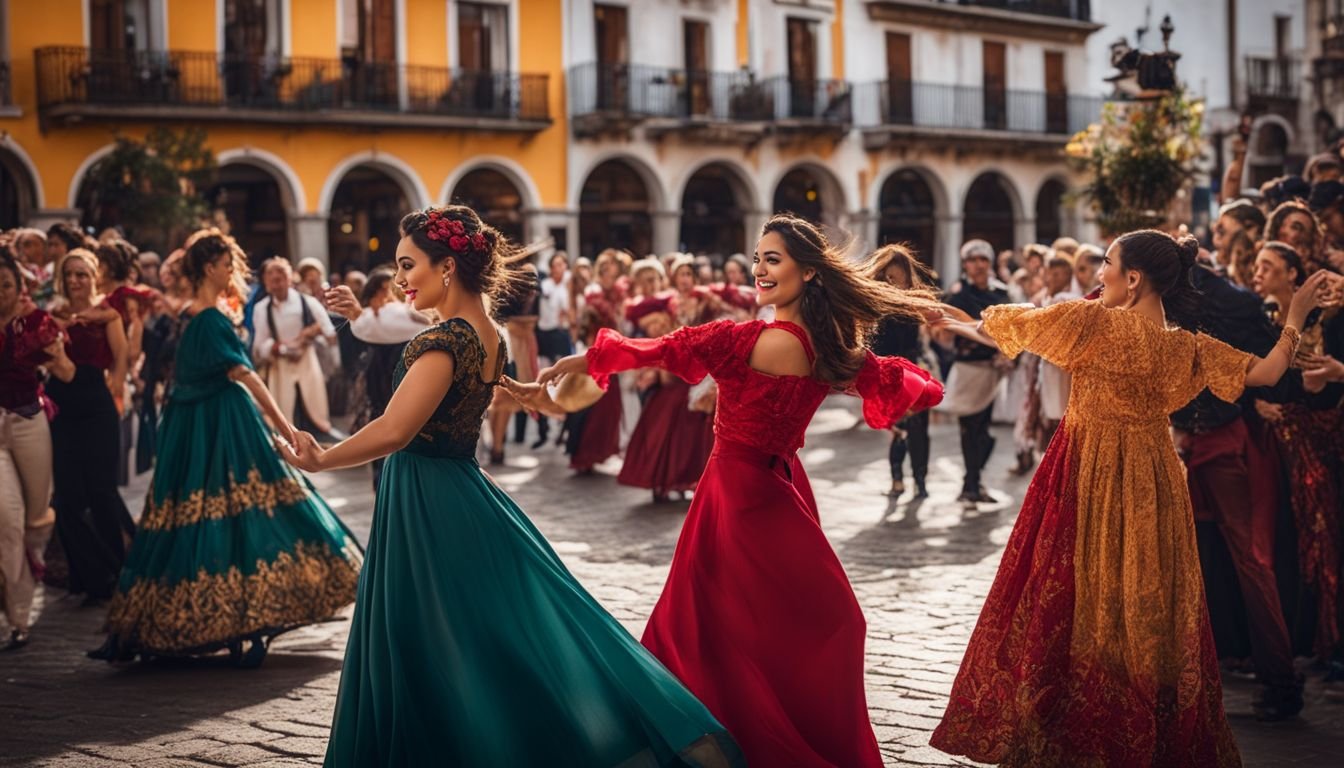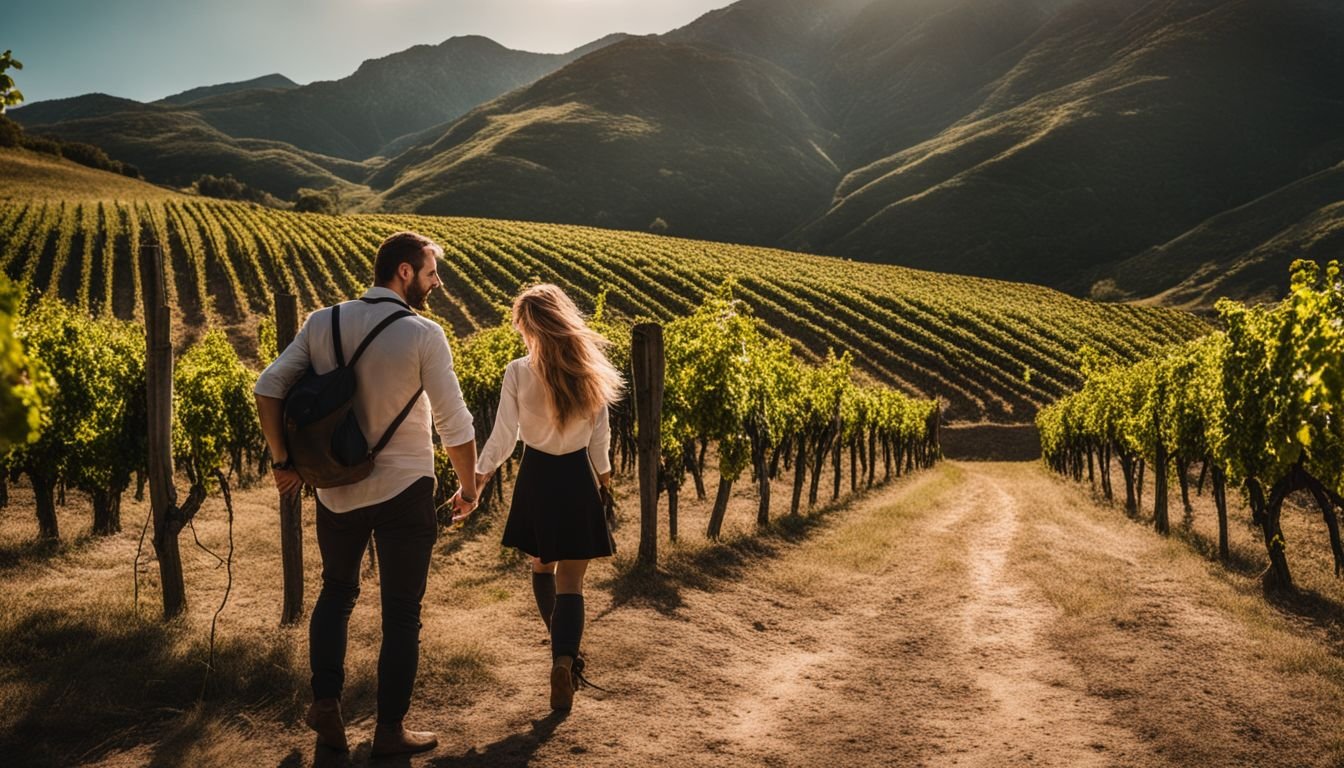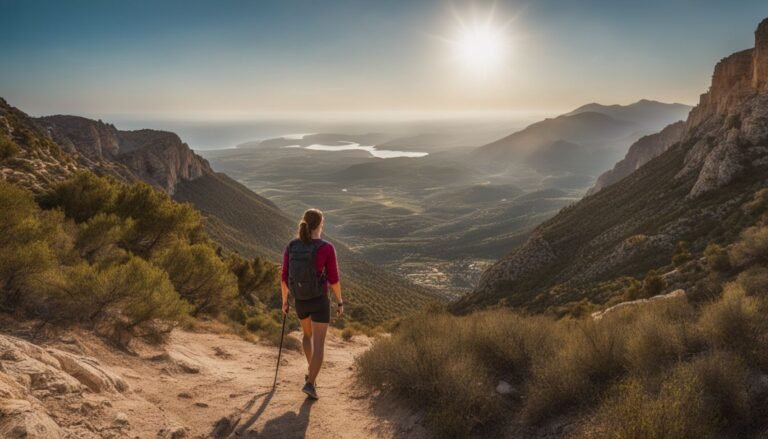Impact Of Geography On Local Culture Of Costa Blanca
Exploring new places can sometimes leave us wondering how geography shapes local cultures. Costa Blanca, a stunning region in Spain, is a perfect example of this. Our article dives into the fascinating ways landscape and weather influence traditions, lifestyle, and even food here.
Get ready to see Costa Blanca like never before!
Key Takeaways
- Costa Blanca’s diverse geography, from its stunning beaches to rugged mountains, deeply influences local traditions and lifestyles. For example, the warm climate promotes outdoor living and activities such as hiking and water sports.
- The region’s economy thrives on tourism thanks to its appealing geography and climate. Cities like Benidorm rely heavily on tourist income, which has also led to significant urban development catering primarily to visitors’ needs.
- Local cuisine in Costa Blanca reflects the geographic bounty of the area. Fresh seafood is a staple due to the coastal location while fertile valleys contribute fresh vegetables for traditional dishes.
- Urban sprawl driven by residential tourism from Northern Europe challenges Costa Blanca’s landscape but also infuses new cultural elements into the region. This includes increased demand for infrastructure that caters to foreign tastes and preferences.
- Nature conservation areas along Costa Blanca’s coast play a crucial role in protecting marine life and ecosystems. These areas not only support biodiversity but also enhance local culture by providing settings for festivals that celebrate nature’s bounty.
Overview of Costa Blanca

The geography of Costa Blanca varies from rugged coastlines to sandy beaches. The region experiences a Mediterranean climate, with warm, dry summers and mild winters.
Geography
Costa Blanca stretches along the southeastern coast of Spain, offering a diverse landscape that shapes its local culture. Its coastline features stunning sand beaches and craggy cliffs, while inland areas boast rugged mountains and fertile valleys ideal for agriculture.
This variety in terrain influences everything from daily life to traditional festivities, painting a vivid picture of how geography molds community identity.
Urban sprawl in regions like La Marina and Vega Baja has transformed pre-coastal landscapes into suburban developments, driven by residential tourism from Northern European countries.
The close proximity of Alicante airport plays a crucial role in this transformation, making Costa Blanca an accessible haven for holiday homes and migrants seeking the mild Mediterranean climate.
Moving on, let’s explore how the region’s weather further impacts its lifestyle and traditions.
Climate
Moving from the geographical layout, the climate of Costa Blanca plays a pivotal role in shaping its local culture and attracting tourists. Sunny skies prevail most of the year, with mild winters making it an ideal destination for those seeking warmth and sunshine.
This pleasant weather has been a major lure since the 1960s, drawing tourists for holidays and even encouraging some to make this beautiful region their home.
The affordability paired with endless sunny days significantly contributes to Costa Blanca’s appeal among British tourists and other European visitors. Frequent flights to Alicante airport ensure easy access, further boosting tourism and influencing cultural exchanges.
Activities like ecotourism thrive under such climatic conditions, fostering a deeper connection between visitors and the natural beauty of Costa Blanca.
Transportation
The proximity of Alicante airport significantly boosts the flow of residential tourists to Costa Blanca, making it a bustling hub for arrivals from all corners of the globe. This ease of access supports the region’s economy and facilitates cultural exchange, bringing diverse influences into local traditions and lifestyle.
Improved transportation links also offer residents and visitors alike greater mobility across this picturesque landscape.
Despite these advancements, the rapid expansion of suburban areas has led to challenges in public transportation access. Traffic congestion becomes a regular sight as more people flock to Costa Blanca, attracted by its beauty and lifestyle opportunities.
These conditions strain local infrastructure but also underscore the urgent need for sustainable urban planning to accommodate growing populations while maintaining Costa Blanca’s charm and livability.
Impact of Geography on Local Culture

The local culture in Costa Blanca is greatly influenced by its geography. The region’s climate and geographical features shape the lifestyle, traditions, and economy of the area.
Influence of climate on lifestyle
The climate in Costa Blanca significantly influences the lifestyle of its residents. With over 300 days of sunshine a year, the region’s Mediterranean climate shapes daily activities and habits.
The warm, dry weather encourages outdoor living and al fresco dining, contributing to a vibrant social atmosphere and emphasizing the importance of leisurely meals shared with friends and family.
Additionally, the moderate temperatures throughout the year support an active lifestyle, promoting activities such as hiking, water sports, and golfing that are integral to the local culture.
Costa Blanca’s climate also impacts housing preferences and designs. The warm weather allows for open-air living spaces like terraces or courtyards to be central features of homes.
Role of geographical features in local traditions
Geographical features significantly shape the local traditions of Costa Blanca. The presence of mountains, coasts, and fertile land has influenced traditional activities such as agriculture and fishing.
These geographical resources have also impacted cultural practices, leading to annual festivals celebrating agricultural harvests and maritime heritage. Additionally, the proximity to the Mediterranean Sea has fostered a culinary tradition centered around fresh seafood and locally grown produce.
The unique landscapes in Costa Blanca have not only contributed to local livelihoods but have also formed an essential part of community identities. For instance, the region’s renowned white sandy beaches attract locals and tourists alike for leisurely activities like water sports or simply enjoying the coastal vistas.
Furthermore, historical landmarks amid stunning natural settings give rise to cultural events that celebrate the area’s rich history and draw attention to efforts aimed at preserving its traditions and environment.
Effect of location on local economy
The geographical location of Costa Blanca plays a pivotal role in shaping the local economy. Being a renowned tourist destination, the region’s economy heavily relies on tourism as a primary source of income.
With cities like Benidorm depending significantly on tourism for 85% of their local income, the location’s appeal to tourists and its accessibility greatly influence economic activities and development.
Additionally, the growth of urban sprawl driven by residential tourism from Northern European countries has further impacted the local economy. This influx of foreign residents has led to new economic opportunities through real estate investment, infrastructure development, and an increase in demand for goods and services tailored towards this demographic.
Influence of Tourism on Local Culture
The evolution of Costa Blanca as a tourist destination has significantly impacted local traditions and the environment. To discover how tourism has shaped the culture of this vibrant region, read on for insightful analysis and data-driven insights.
The evolution of Costa Blanca as a tourist destination
Costa Blanca has undergone a remarkable transformation, evolving from a region primarily focused on agriculture and fishing to becoming one of the most popular tourist destinations in Spain.
This evolution has been driven by the area’s stunning natural beauty, including its white sandy beaches and clear blue waters, which have attracted visitors from around the world. The rise of tourism in Costa Blanca has significantly impacted the local economy, leading to substantial growth in infrastructure development and amenities catering to tourists’ needs.
The growing popularity of Costa Blanca as a tourist destination has not only brought economic prosperity but also resulted in urbanization and modernization of previously traditional towns.
The impact of mass tourism on local traditions
Mass tourism has significantly impacted the local traditions of Costa Blanca. The influx of tourists has led to a commodification of traditional cultural practices, often leading to customs being performed solely for entertainment purposes rather than as genuine expressions of local heritage.
Moreover, the surge in mass tourism has resulted in an increased demand for commercialized versions of traditional crafts and products, which sometimes compromises their authenticity.
As large numbers of tourists flood popular sites and events, this can create a sense of artificiality, diluting the genuine essence and meaning behind local traditions.
Additionally, the heightened presence of mass tourism can lead to overcrowding at key cultural landmarks and events, causing strain on local infrastructure and disrupting the natural rhythm of these traditions.
This overflow may impact locals’ engagement with their own customs as they share spaces with large volumes of visitors who are not familiar with or respectful towards these traditions.
Positive and negative effects of tourism on the local environment
The impact of mass tourism on local traditions has also led to both positive and negative effects on the local environment in Costa Blanca. With an influx of tourists, there has been a surge in job opportunities and infrastructure enhancements, benefiting the local economy.
However, this has also escalated pressure on resources and contributed to environmental degradation. Rapid urbanization resulting from tourism development has irreparably damaged the landscape, especially near coastal areas, leading to overcrowding around protected natural parks with little transition between urbanization and natural surroundings.
Instances of overcrowding in tourist hotspots like Benidorm have further exacerbated environmental issues such as congestion on roads and sewage problems. Additionally, greater footfall has strained resources and habitats, leaving a lasting impact on the delicate ecological balance of the region.
Urban Sprawl and Residential Tourism
Urban sprawl and residential tourism play a pivotal role in the urban development of Costa Blanca, shaping not only its physical landscape but also influencing the social fabric of the region.
The influx of Northern European residential tourism has led to significant demographic changes and cultural influences, impacting the traditional way of life in Costa Blanca.
The role of residential tourism in urban development
Residential tourism plays a pivotal role in shaping the urban development of Costa Blanca. The rapid influx of residential tourists, especially from Northern European countries, has led to significant population growth and an expansion of urban sprawl in areas such as Torrevieja, Rojales, and San Fulgencio.
Notably, this surge in demand for second homes by foreign investors has driven up house prices, posing affordability challenges for local residents. Moreover, the development of low-density housing projects catering to residential tourists has encroached upon natural and agricultural lands while contributing to traffic congestion and strains on local infrastructure.
Driven by high demand from international residential tourists, the extensive urban sprawl developments have transformed once-rural landscapes into homogeneous neighborhoods lacking a mixture of land uses.
Influence of Northern European residential tourism
The role of residential tourism in urban development paves the way for an exploration into the influence of Northern European residential tourism. The expansion of urban sprawl along the Spanish Mediterranean coast has been significantly driven by demand from long-stay tourists and retired migrants from Northern Europe, particularly the British.
The uncontrolled development in this region is closely tied to this demographic, with one-third of all immigrants over 55 linked to residential tourism processes. With its relatively low cost compared to other European destinations, the Spanish Mediterranean area attracts these Northern European residential tourists as a desirable investment location.
This influx has characterized urban sprawl through low-density developments encroaching on natural and agricultural lands. The impact is also evident in areas like Costa Blanca, where high demand from Northern Europeans led to significant growth in residential tourism and played a pivotal role in shaping local culture and traditions.
Consequences of urban sprawl for local culture
Urban sprawl in Costa Blanca has brought about significant consequences for the local culture. The expansion and rapid development of suburban areas have led to isolation from compact cities, limiting access to public transportation and creating perceptions of insecurity among residents.
Furthermore, uncontrolled urban sprawl has resulted in devastating environmental consequences and overpopulation in certain places, such as Torrevieja, Rojales, and San Fulgencio. The influx of residential tourists has also exacerbated overpopulation issues while straining local infrastructure and causing traffic congestion.
The expansion of urban sprawl not only affects the physical landscape but also impacts the social fabric and traditional way of life in these regions. As more emphasis is placed on accommodating a growing population, the cultural identity that once defined these areas faces challenges as it strives to adapt to an ever-changing environment driven by urbanization forces.
The Effect of Climate on Health
The climate of Costa Blanca contributes to the region’s health, with its year-round sunshine and low humidity offering various health benefits. The Mediterranean climate attracts tourists and residential migrants seeking a healthier lifestyle, which enhances the overall well-being of the local community.
Health benefits of Costa Blanca’s climate
The sunny and warm weather of Costa Blanca has a positive impact on mental health and overall well-being. The Mediterranean climate offers opportunities for outdoor activities and physical exercise, contributing to improved health outcomes.
Additionally, the coastal location provides opportunities for water-based activities and relaxation, which can have positive effects on mental and emotional health. Costa Blanca’s climate plays a vital role in attracting tourists and residential migrants seeking a healthy lifestyle amidst natural surroundings.
Let’s dive into the unique advantages of this region – from its temperate weather encouraging outdoor activities to the calming influence of coastal living on mental well-being.
Role of climate in attracting tourists and residential migrants
The sunny climate of Costa Blanca plays a pivotal role in attracting tourists and residential migrants. With over 300 days of sunshine each year, the region offers an appealing environment for those seeking warmer weather and outdoor activities.
The temperate Mediterranean climate, characterized by mild winters and hot summers, is a significant draw for retirees from Northern Europe. Moreover, the health benefits associated with this climate are particularly attractive to residential migrants seeking a better quality of life.
Furthermore, the favorable climate has contributed to making Costa Blanca an appealing investment destination for residential tourists. Affordability coupled with the pleasant climate has attracted a substantial number of foreign investors looking to establish secondary residences or retire in the region.
Nature and Surroundings in Costa Blanca
The coastal protected areas of Costa Blanca offer a haven for diverse flora and fauna, influencing local culture and traditions. The stunning natural surroundings provide the backdrop for cultural festivals that celebrate the region’s connection to nature.
Coastal protected areas
The coastal protected areas in Costa Blanca are vital for preserving the natural beauty of the region and safeguarding its ecosystems. They serve as havens for diverse marine life and contribute to the overall environmental sustainability of the area.
- These areas promote biodiversity, offering habitats for numerous species of flora and fauna.
- They provide opportunities for eco – tourism, allowing visitors to experience the unspoiled beauty of the coastline while raising awareness about conservation efforts.
- Coastal protected areas support sustainable fishing practices, helping maintain a delicate balance between human activity and ecological integrity.
- These sites also play a crucial role in protecting archaeological and cultural heritage embedded within their boundaries, enriching the historical significance of Costa Blanca.
- The preservation of these coastal areas contributes to mitigating the impact of urban sprawl on natural landscapes and ensures a more harmonious coexistence between human development and nature.
Influence of nature on local culture and traditions
The stunning natural surroundings of Costa Blanca have a profound impact on the local culture and traditions. The region’s coastal protected areas play a significant role in shaping the lifestyle and customs of its inhabitants.
These natural havens not only provide recreational opportunities but also influence cultural practices, such as traditional fishing methods and culinary preferences. Furthermore, the proximity to these coastal areas has fostered a deep sense of appreciation for nature, leading to the incorporation of environmental conservation practices into local traditions and celebrations.
In addition to coastal environments, Costa Blanca’s diverse landscapes, including mountains, valleys, and agricultural terrain, contribute to the rich tapestry of local culture. Such varied surroundings have given rise to unique festivals celebrating harvests, seasonal changes, and rural traditions.
Food, Wine, and Culture in Costa Blanca
The geography of Costa Blanca has greatly influenced its local cuisine, featuring a variety of fresh seafood and vegetables unique to the region. Local wine production is intricately tied to the land, with vineyards benefiting from the area’s climate and topography.
Cultural festivals celebrated in Costa Blanca are closely connected to the region’s geography, showcasing traditions rooted in its natural surroundings.
Influence of geography on local cuisine
The geography of Costa Blanca has significantly influenced the local cuisine. The region’s coastal location has resulted in a rich tradition of seafood dishes, with fresh fish and shellfish playing a central role in many local recipes.
Additionally, the fertile land and favorable climate have facilitated the cultivation of vibrant fruits and vegetables, which are prominently featured in traditional Mediterranean dishes such as paella and gazpacho.
The diverse terrain of Costa Blanca allows for the production of olive oil, almonds, and various herbs, all contributing to the distinct flavor profiles found in local cuisine. Moreover, the influence of tourism on the region has led to an integration of international culinary influences that complement traditional Spanish cooking techniques.
Local wine production and its ties to the land
Local wine production in Costa Blanca is fundamentally connected to the region’s geography. The land, with its diverse soil types and microclimates, plays a pivotal role in the cultivation of grapevines and the unique flavors of local wines.
The hilly terrain and coastal proximity contribute to the distinctive characteristics of Costa Blanca wines, making them an integral part of the region’s culture.
The geographical features not only influence the quality and taste of the wines but also shape cultural practices around winemaking. For instance, traditional festivals and celebrations are often centered around grape harvesting seasons, highlighting the deep-rooted connection between local wine production and the land.
Furthermore, vineyards nestled amidst picturesque landscapes offer visitors a glimpse into the rich heritage that stems from this union between geography and winemaking.
Cultural festivals and their connection to geography
Cultural festivals in Costa Blanca showcase the region’s rich culinary heritage, which is deeply intertwined with its geography. The unique cuisine of the area is a reflection of the local geography and climate, incorporating fresh seafood from the Mediterranean, locally grown produce, and olive oil.
These ingredients are prominently featured in traditional dishes celebrated during cultural festivals, highlighting how the land and sea have shaped the local gastronomy.
In addition to cuisine, these festivals also celebrate traditional music, dance, and arts linked to the region’s geography and history. The influence of geographical features such as mountains, coastline, and fertile valleys can be seen in various art forms presented during these events.
Sports and Activities
Sports and activities in Costa Blanca are influenced by the region’s geography, offering a wide range of outdoor pursuits; read on to discover more about these unique recreational opportunities.
Outdoor activities influenced by geography
The geography of Costa Blanca has influenced the growth of outdoor activities and sports due to its Mediterranean coast and natural landscape. The influx of retired residential tourists in Costa Blanca has led to the development of outdoor activities and sports catering to this demographic. The expansion of urban sprawl in the La Marina and Vega Baja districts of Costa Blanca has impacted the availability and accessibility of outdoor activities and sports in the area. The natural geography of the Spanish Mediterranean coast has attracted residential tourists, leading to the promotion and development of outdoor activities and sports in the region. The coastal geography of Costa Blanca has influenced the types of outdoor activities and sports available, such as water sports and beach activities. The demand from residential tourists, particularly retirees from Northern Europe, has influenced the variety and accessibility of outdoor activities and sports in Costa Blanca. The environmental degradation and pressure on resources in Benidorm, a popular tourist destination in Costa Blanca, have had implications for outdoor activities and sports in the area.
Influence of geography on popular sports in the region
The geography and climate of Costa Blanca play a significant role in shaping the popular sports and activities in the region. With its stunning beaches, warm Mediterranean climate, and diverse landscapes ranging from mountains to coastal plains, Costa Blanca offers an array of outdoor activities that have become integral to local culture.
Water-based sports such as sailing, windsurfing, and scuba diving thrive due to the region’s extensive coastline and crystal-clear waters. The rugged terrain also fosters hiking, mountain biking, and rock climbing, making these adrenaline-pumping activities deeply ingrained in the local lifestyle.
Additionally, the temperate weather year-round encourages outdoor team sports like soccer (football) and basketball to flourish across various communities. Furthermore, golf has become immensely popular owing to the abundance of golf courses scattered throughout the region catering not only to locals but also tourists seeking leisurely sporting experiences.
Conclusion
The geography of Costa Blanca significantly shapes the local culture, influencing everything from lifestyle to traditions and economy. The region’s climate attracts tourists and residential migrants, impacting health and outdoor activities.
Nature and surroundings play a vital role in shaping local traditions, cuisine, wine production, and cultural festivals. Geography also influences popular sports in the region. As urban sprawl continues to pose challenges for the future, rational and sustainable urban planning is crucial for preserving the rich culture of Costa Blanca while addressing environmental concerns.
FAQs
1. How does the geography of Costa Blanca influence its local culture?
The unique geography of Costa Blanca, including its stunning coastlines and lush green spaces, shapes the local culture significantly. This region celebrates outdoor living, evident in urban open spaces and the emphasis on green building in areas like Gran Alacant.
2. What role does tourism play in shaping the culture of Costa Blanca?
Tourism has a profound impact on Costa Blanca’s culture, driving urbanisation and influencing social networks within communities. Places like Denia and Molina de Segura have seen their local traditions blend with international influences due to mass tourism.
3. Can technology help preserve cultural identity in rapidly urbanizing areas like Costa Blanca?
Yes, technology such as application programming interfaces (APIs) and location-based services can help document and share cultural heritage sites or events across social networks, aiding in preserving the unique identity of places despite urbanization.
4. How do Spanish cuisine and bodegas contribute to the sense of community in Costa Blanca?
Spanish cuisine and bodegas are central to daily life in Costa Blanca, fostering a strong sense of community through shared meals and gatherings. These traditional elements encourage interactions among residents and tourists alike.
5. Does urban design impact social sustainability in cities within Alicante province?
Urban design plays a crucial role in promoting socially sustainable communities within Alicante province by creating inclusive public spaces that encourage interaction among diverse groups of people, enhancing the overall sense of belonging.
6. How do holiday resorts affect traditional housing styles like single-family homes or row houses in coastal areas?
Holiday resorts often lead to changes in local housing styles; for example, there might be an increase in apartment buildings catering to tourists at the expense of traditional single-family homes or row houses, altering both landscape and lifestyle.







